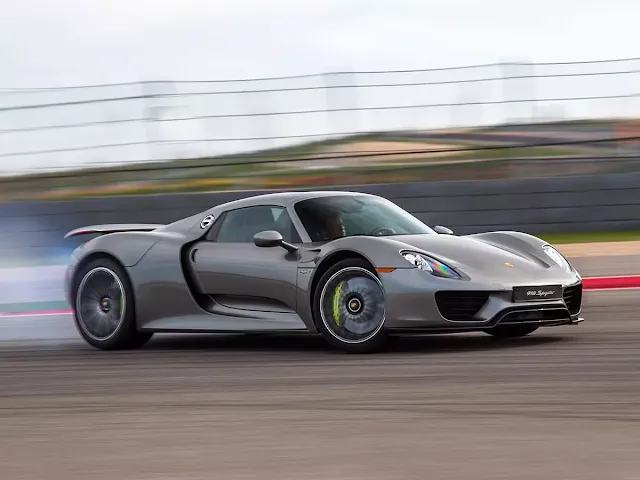Porsche 911 Spyder
 |
| image is taken from carwale.com |
Porsche 911 Spyder: OVERVIEW
A hybrid hypercar that is unique. Powered by two electric motors and a 4.6-liter race V8 engine spinning at 9,000 rpm, the vehicle has two seats and a structure made almost completely of carbon fiber. 875 horsepower, four-wheel drive, and a staggering 944 lb-ft of torque, with more than half of that available at just 800 rpm. You did indeed read that correctly. The 918 Spyder is the only vehicle like it.
Not even the other two members of the "Holy Trinity," the McLaren P1 and LaFerrari. With a 6.8kWh battery that is twice the size of McLaren's, 282bhp of e-thrust, and a 12-mile electric range, the plug-in Porsche is unquestionably the most hybrid of the three. It can reach 62 mph on electric power alone in just over six seconds.
When the engine is used, that amount is more than cut in half. The V8, which pulls out 600 horsepower and provides the 918 a 0-62 mph time of 2.6 seconds, a 0-124 mph time of 7.2 seconds, and a peak speed of 214 mph, is adapted from the RS Spyder Le Man's vehicle. Frank-Steffen Walliser, the man behind the 918 projects, has called it "the best engine we [Porsche] have ever done" despite it being made almost entirely of titanium and aluminum and weighing only 135kg. It claims to get 81 mpg while emitting only 70 g/km of CO2.
While the front drive is entirely electric, the rear electric motor is positioned between the engine and the seven-speed double-clutch gearbox. This powertrain cuts off above 165 mph, limiting the vehicle to rear-wheel drive only.
Overall, the 918 shares virtually little with any other Porsche road car, including the V8, while having an aluminum double wishbone suspension identical to the RS Spyder racer and adaptive dampers as standard equipment. You can choose between four different drive modes on the steering wheel: electric, hybrid, sport, and race. The engine is always running in the latter two.
Before assembling the 918 production cars, Porsche built 25 prototypes and 25 pre-production cars over three years beginning in 2010. It cost £781,000 in the UK, tax included.
Under the carbon fiber body panels of Porsche's second hybrid vehicle (the first was a Panamera), the parts are tightly packed. When the bodywork is stripped away, the 918 Spyder resembles a mechanical Gunter von Hagens exhibit: the skin may have been peeled away, but the underpinnings maintain the same shape. The bodywork doesn't appear to be stretched or sparse.
The front is a little bit soft due to the recessed headlamps, while the back is more striking. In contrast to its McLaren and Ferrari contemporaries, the roof panels can be pulled out and stored under the bonnet, exposing occupants to the weather and the noise of that high-revving V8. The top exit exhausts are a great talking point.



No comments:
Post a Comment